Previous studies by VSG
Mystery of Color Perception

In the visual nervous system, very sophisticated color information processing is done. Color perception that is not affected by changes in illumination light is a good example. Please see the figure above. We feel a sense of incompatibility when we see the blue illumination light hitting an apple only. We feel a sense of incongruity for blue apples, but the apple looks red as it is when the blue illumination light hits the whole figure. It is thought that this is because the visual system presumes the color of the light being irradiated on the visible image and corrects it so that it becomes the original color and perceives it. This phenomenon is called color constancy. We aim to clarify the relationship between the visual perception and the statistical properties (average color, luminance-color correlation, etc.) of the physical color signal and to elucidate the mechanism the color constancy that is not dependent on reflected light. In addition, research results on color constancy are expected to be applied to the development of video cameras with automatic color correction function.

There is only one checker pattern whose color sequence is different from the others, but can you find it quickly? It may be difficult when there is no background, but it will be found as soon as the background comes out. By perceptual transparency that estimates their depth relationship from color information of overlapping faces and perceives the face separately, we can quickly find an opaque face. We aimed to clarify the relationship between transparency perception and color change that physically occurs by being covered with a transparent object. Perceptual transparency is also deeply related to color constancy.
Animation and the electric bulletin board at the station etc. actually only change the still picture continuously, but people recognize it as if it is moving. Such motion is called apparent movement. In this laboratory we have studied how the apparent movement affects color perception.
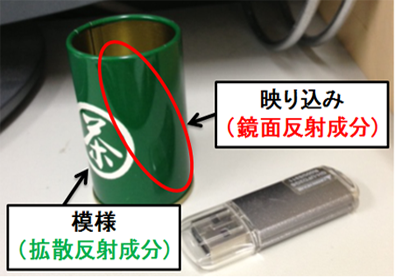
Light reflected from the surface of an object can be separated as diffuse reflection component that depicts colors and patterns, and specular reflection component that depicts glare. Recent studies have suggested that we can perceive surface qualities (e.g. glossiness, transparency) by the relationship between these reflection components. However, it is still unclear whether diffuse and specular components are distinguished and separately processed in the visual system. In our laboratory, we employ the chromatic adaptation on object images with rich surface qualities to show the evidence of existence of the distinct mechanisms for diffuse and specular components.
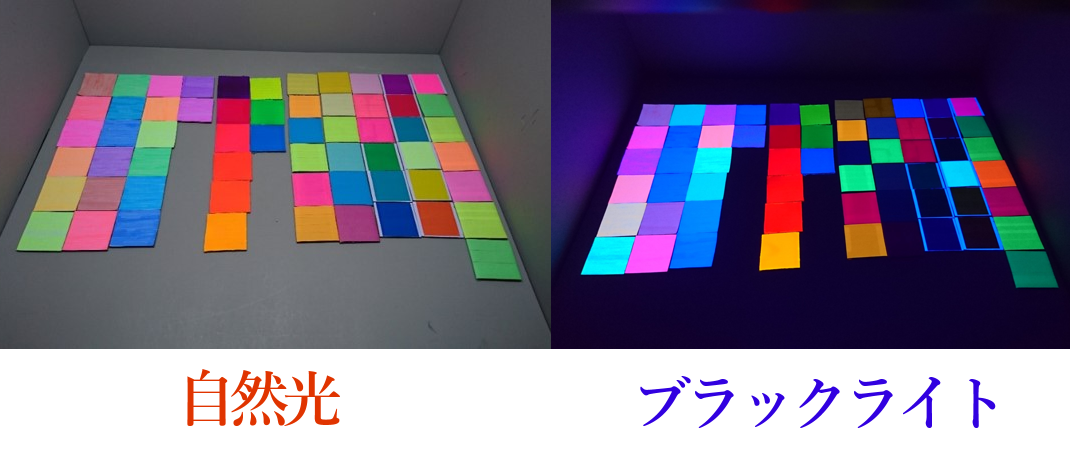
We can find many items colored by fluorescent color easily. Fluorescence is the emission of light by materials that has absorbed a light or other electromagnetic radiation, which is a form of luminescene. However, the perception of fluorescence occurs not only to a fluorescent material but also a non-fluorescent material, for example pictures on a monitor, fashion magazine and so on. The mechanism of perception of fluorescence has not been explained because only few researchers have studied about this. In this laboratory, we are doing research about mechanism of perception of fluorescence. Therefor we are trying to determine the way to measure how fluorescent and to reveal the perceptual meaning of fluorescence.
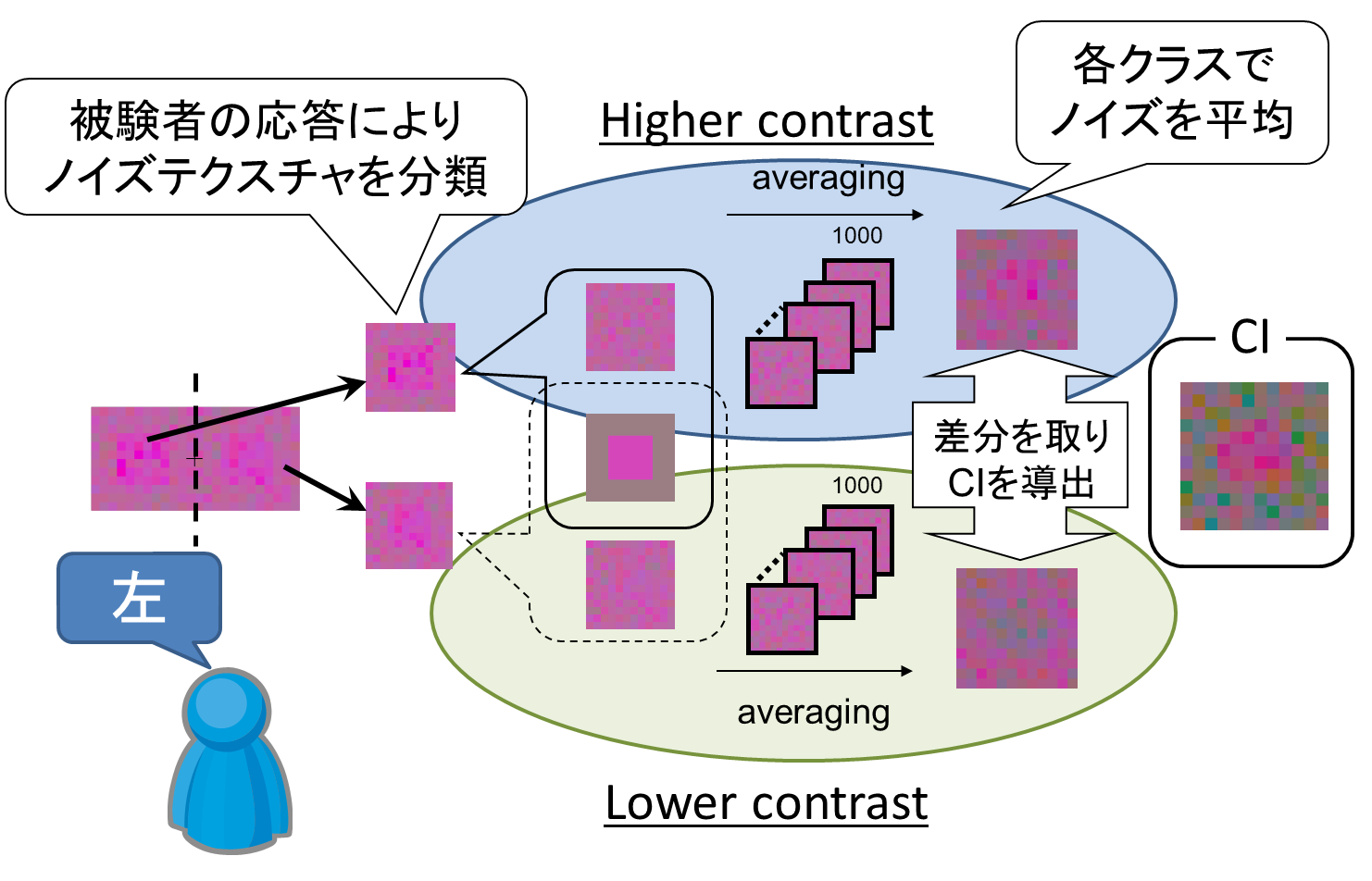
According to studies on human chromatic mechanisms, representation of color information in human visual system depends on level of color-information processing. For example, at an initial stage, color information is represented by three different classes of cones, and then they are linearly combined and transformed to the next cone-opponent representation. Meanwhile, details of functions of post cone-opponent level, referred to as “higher-order chromatic mechanisms”, are still unclear. In our laboratory, we employ the Classification Image (CI) technique that enables us to investigate information related to observers’ response from random chromatic noise, which leads to understand the characteristics of higher-order chromatic mechanisms and construct its mathematical model.
[Reference]
Material Perception

When we are looking at the surface of objects, we notice the color and brightness, as well as glossiness, transparency, metalness, softness. For example, which ball gives different material feeling in the above figure? Even though the color of each sphere is close, we can instantly judge the difference in material feeling. From this, we can see that humans are easy to judge the characteristic of surface texture made up of highly complex optical phenomena. In order to elucidate the perception mechanism of human beings to such material feeling, we have conducted verification research based on psychophysical experiments.

Transparency is caused by complex optical properties such as light transmission and scattering within the object. However, even if we do not know the optical properties of the object itself, we can easily perceive the transparency from only the object image reflected on the retina. The mechanism to perceive this transparency has not yet been elucidated. In this laboratory, by specifying the position of the object image contributing to the transparency by experiments adjusted finely the image features of the object image, and quantifying the change of the perceptual transparency by the illumination environment of plastic bottles with different transmittance, we aim to clarify the image features related to transparency and the mechanism of the visual system that captures it.

There are objects made of various materials around us, and we can instantly judge the material just by looking at the object. In addition to that, we can judge the glossiness such as glossy complexion and the texture such as surface roughness that is related to the feel of touch. It has been suggested that human beings use more complex image information as well as simple image statistics such as color and contrast when judging material and texture. However, it is not yet clear what the information is concretely. We also do not know at which level of visual system such image information is being processed. This laboratory aims to elucidate human material identification mechanism, image information contributing to material identification, and human texture recognition mechanism by conducting psychophysical experiment using actual sample made of various materials.
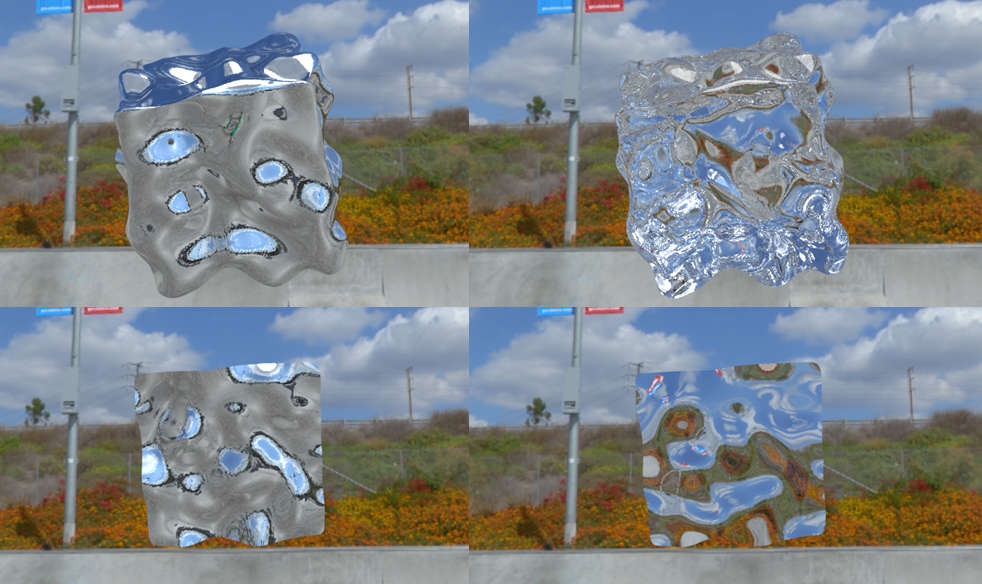
The materials such as a mirror and glass have similar characteristics that the surrounding environment is reflected or transmitted depending on their shape. However, we usually can distinguish between their materials easily. We have been investigating about the visual cue for perceptual discrimination between mirror and glass objects. The result showed that the information caused by a motion and the color polarity are essential to estimate surface material.
Dichromat
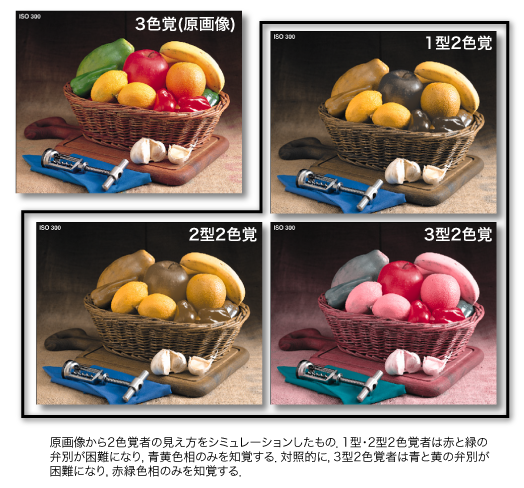
In general, we are trichromats who perceive color from three kinds of color sensors (pyramids), blue, green and red. However, sometimes genetic factors cause one of the three cones to be deleted, expressing color vision called dichromatic sensation, which is extremely difficult to discriminate between specific color combinations. Dichromats are largely classified into type 1 to type 3 depending on which one of the three cones is missing. Among them, 5% of Japanese men, which is about 3 million people are dichromats of type 1 and type 2. However, even today social recognition for dichromats is not yet high, and in the case of websites, advertisements, even textbooks and public signs, two color perception has made it difficult to distinguish the color scheme. Therefore, in this laboratory, we aim to develop various tools to promote “Color Universal Design (CUD)” that is easy to see for people with any color vision, and to do academic research on dichromat through visual experiments.
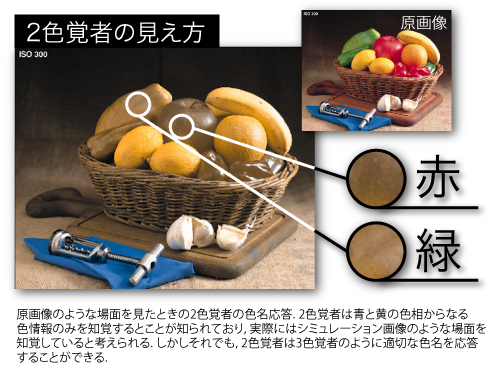
It is known that discrimination between red and green color is extremely difficult for dichromats of type 1 and type 2 called dyserythrochloropsia. However, on the other hand, they can answer the color which should be looked almost the same color using the color name such as “red” or “green” as trichromats. How is the ability of these dichromats to be able to “distinguish unidentified colors” caused? In our laboratory, we have studied on solving this problem by examining the color name response of two color perception person from various approaches.
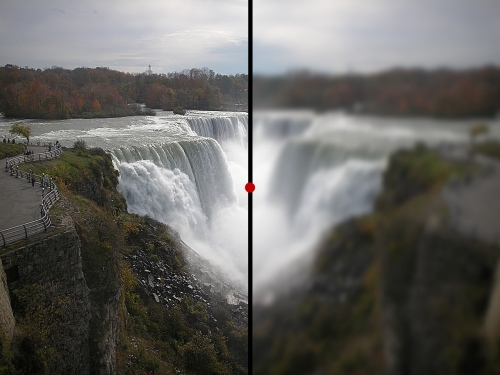
Please have a look at the two images above (left: sharp image, right: blurred image) for about 10 seconds. Next, when the mouse is placed on the image, the image changes. At that time, which image did you feel blurred? Although the two images are exactly the same, you probably felt the left side is more blurred. This phenomenon seems to be due to the fact that the visual system performed processing to reduce blurring on the retinal image in order to maximize information from the blurred image while observing it. We aim to elucidate the visual system by clarifying the details of such phenomena related to vision by experimental and computational approach.
Research on Movement
There are many ways when human beings view an object by their eye, for instance, only with the movement of the eyes, with the movement of the head, with both head and eye movements, and so on. Humans select one
way
from these instantaneously and operate it. Also, when multiple body parts cooperate, hierarchical adjustments are required. For example, eyes might move at the first, adjusting the movement of the head according to the movement, and
further adjusting the movement of the shoulder. Such relationship is called “hierarchy” of the body.
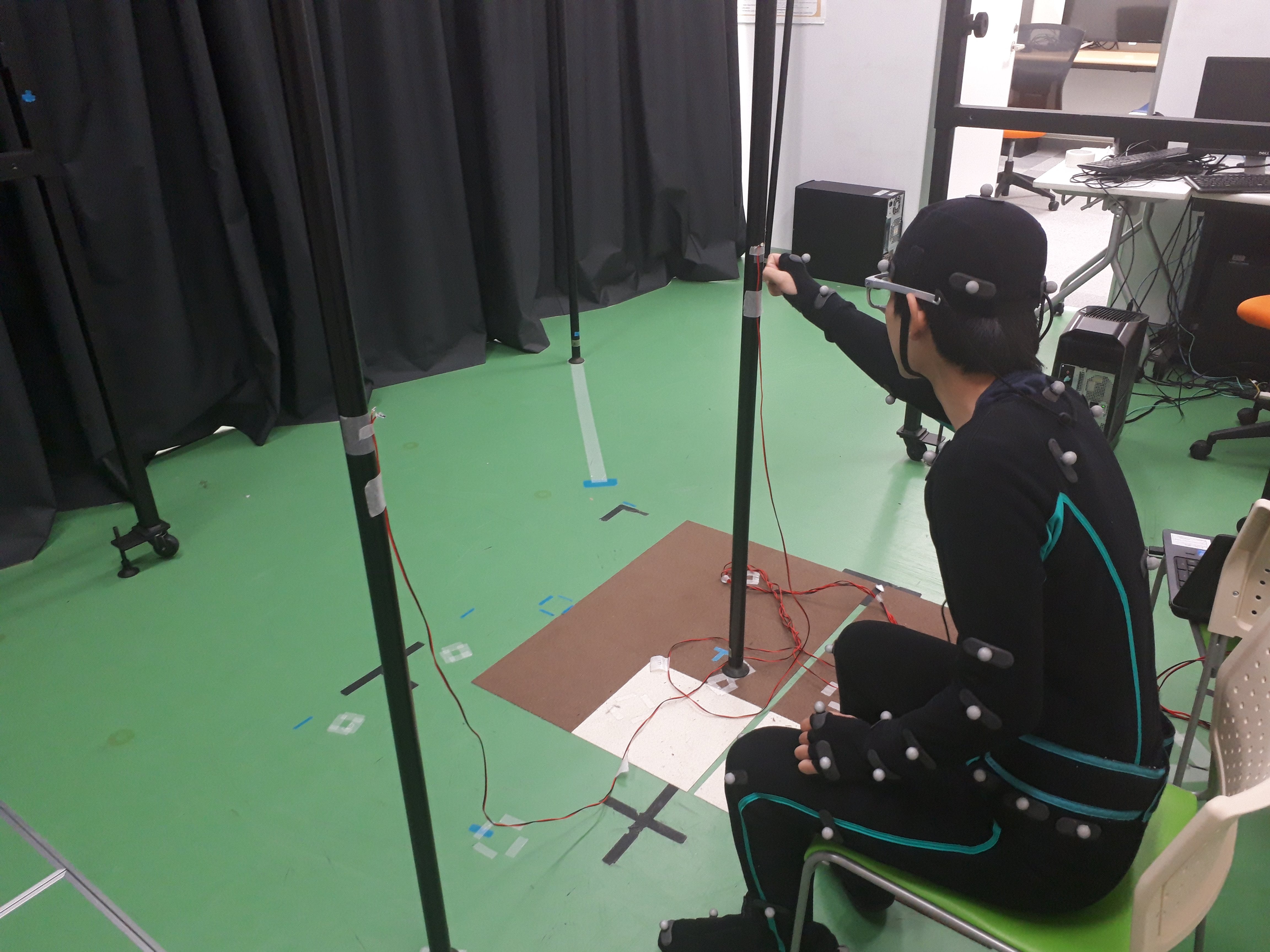
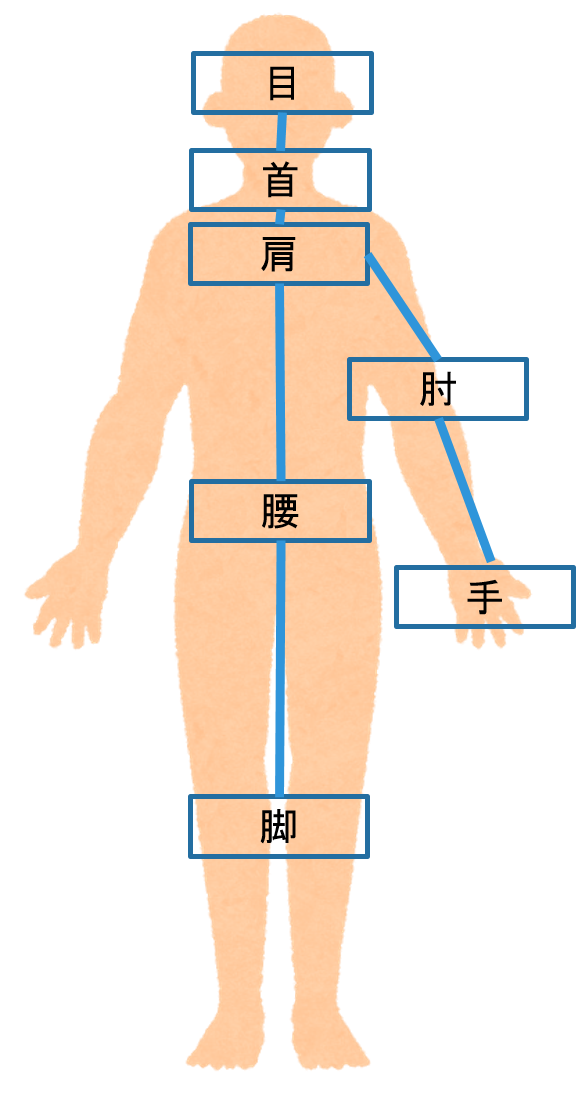
The relationship between the trajectory of the hand and the gaze position when a person move his hand to grab and hold an object, the relationship between the eyes, the head and the body in the walking motion and the rotational motion have been studied. However, there is no discussion about the hierarchy of motion with multiple body parts including the eyes, and changes in hierarchy by learning. Therefore, in our laboratory, we built a measurement system with a motion capture system and an eye movement measurement device in order to measure the hierarchy of the eye gaze position and each body parts in a reaching movement. In addition, we continue this research to see how human adapts their motions and how the hierarchy of body is changed by doing the same motion for multiple times.
